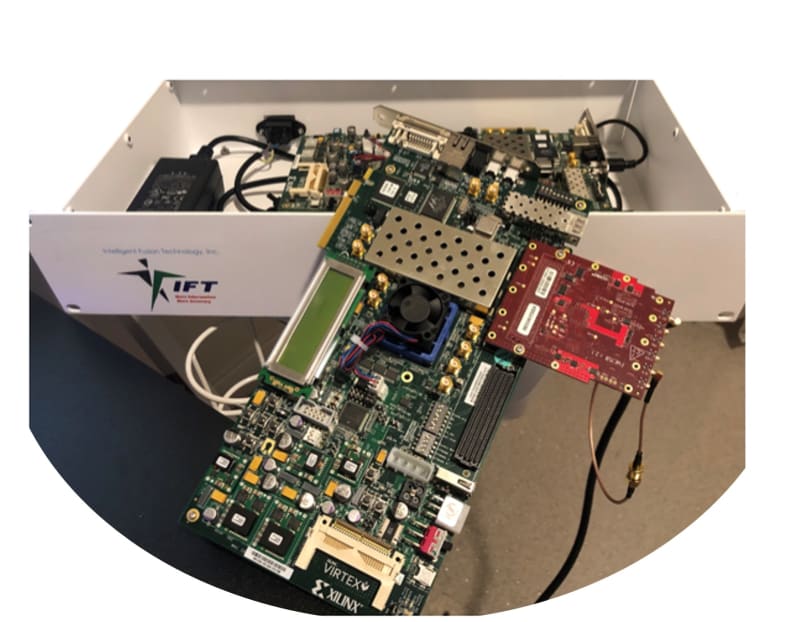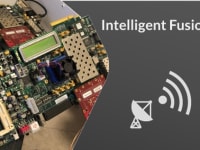Satellite communication (SATCOM) systems need to operate in challenging and hostile radio frequency (RF) environments in the presence of unintended and/or intended RF interferences (RFI). For military and commercial applications, it is important to develop advanced RFI mitigation and anti-jamming (AJ) capabilities. Key enabling technologies for such capabilities include advanced RF situation awareness and adaptive dynamic resource allocation (DRA).
The Intelligent Fusion Technology, Inc. (IFT) team has developed EDGES, an Electronic Defense Game-Theoretic Engine for SATCOM. A hardware add-on for SATCOM Ground Control providing Electronic Defense (ED) in hostile RF environments. EDGES performs per-hop in-service signal-to-noise (SNR) based RF situational awareness using dynamic game theory-based DRA algorithms. EDGES has been developed for the wideband global satellite system (WGS) and protected tactical waveforms (PTW). At present, the IFT’s game theoretic DRA (IGDRA) engine is a software package that has been tested on an in-house developed SATCOM testbed. The IGDRA engine was running on a Raspberry Pi and sent DRA decisions via an Ethernet cable. Simulation results showed that IG DRA produces desired DRA decisions for per-hop SNR distribution cases in partial band partial time (PBPT) jamming scenarios.
IFT has feasibility results that have laid a solid foundation for the extension of the IDGRA software module to an FPGA-based hardware module, as well as enhance the RF situational awareness based on the autonomous assessment of per-hop, in-service, SNR ratio estimation. Future goals include: i) Autonomous impact assessment of per-hop, in-service, signal-to-noise ratio estimation, and radio interferences; ii) The engineering development of smart SATCOM hub controller to reduce interference encounter rates; and iii) Testing the real-time performance of eliminating or neutralizing the unfriendly radio and multi-access interference actions.
The envisioned the IGDRA hardware will be able to make timely and smart DRA decisions based on enhanced RF situational awareness. The final deliverable (FPGA-based IGDRA) is envisioned as a complete hardware add-on for any SATCOM ground control, for electronic defense in hostile RF environments. For technology licensing, there is potential for sales of various system innovations.
EDGES is envisioned as a complete hardware add-on for any SATCOM ground control, for ED in hostile RF environments. However, for technology marketing and licensing, there is potential for sales of various system innovations including, the IGDRA software, the per-hop SNR link estimator, and the USRP emulation testbed. Our product will support applications that include the WGS program, and the development of PTW terminals for AJ capability, efficiency, reliability and availability. IFT also has the intellectual property to realize the commercialization stage and attain a competitive advantage. IFT has 3 patents related to EDGES.
Video
Like this entry?
-
About the Entrant
- Name:Nichole Sullivan
- Type of entry:teamTeam members:Dan Shen, Xin Tian, Genshe Chen, Nichole Sullivan
- Software used for this entry:Matlab, Python
- Patent status:patented








